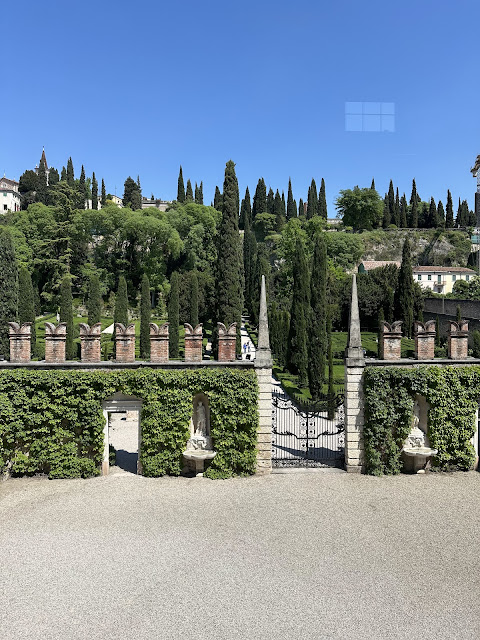Venice
A City of 118 Islands
We arrived at the Venice train station and the first thing we had to do was cross a canal to get to our third rented home away from home. We would soon get accustomed to crossing canals, as the big island of Venice is really a group of small bits of land. If you are interested, there is a fascinating history about the marshes that became this famous seaport.
After lugging the suitcase over the big steps, we found we were not far from our small apartment. We were happy to have a small secluded outdoor space to regroup before heading out into the great unknown!
our little patio. With the thousands of tourists, we were fortunate to land in a very quiet part of Venice. Again we were surprised that it is a very walkable town as well as easy to hop on a vaporetto or water bus.
Here is one of my favorite photos. I just happened to be at the right place at the right moment.
 |
| Two gondoliers on their way to work! |
However, most visitors here are more interested in seeing the fabulous architecture. As we hopped on our first vaporetto going down the Grand Canal, we had no idea of where we were going or where we might hop off until we saw this marvelous church.
 |
| Santa Maria della Salute |
But more famous (and much more crowded) is St Mark's Square, home of St. Mark's Basilica and the Doge Palace.
 |
| St. Mark's Piazza and Basilica |
Venice is more than monuments, canals, bridges and tourists. It is home for people who shop at the market and go home to cook. We enjoyed seeing both the beautiful history and the reality of Venice.
With one more stop ahead of us before heading home, we took the train back to Milan where we would say Goodbye Italy.

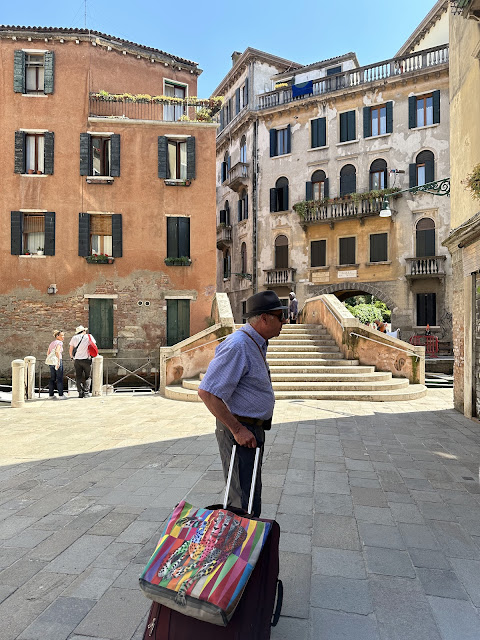
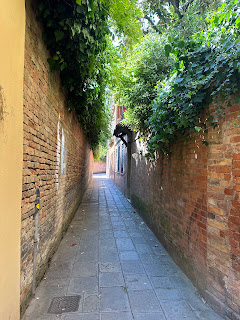


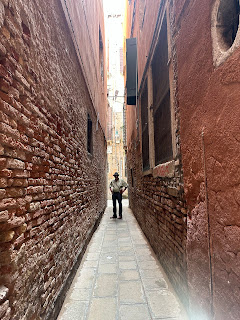

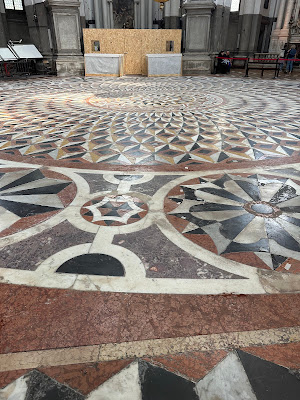









.HEIC)



